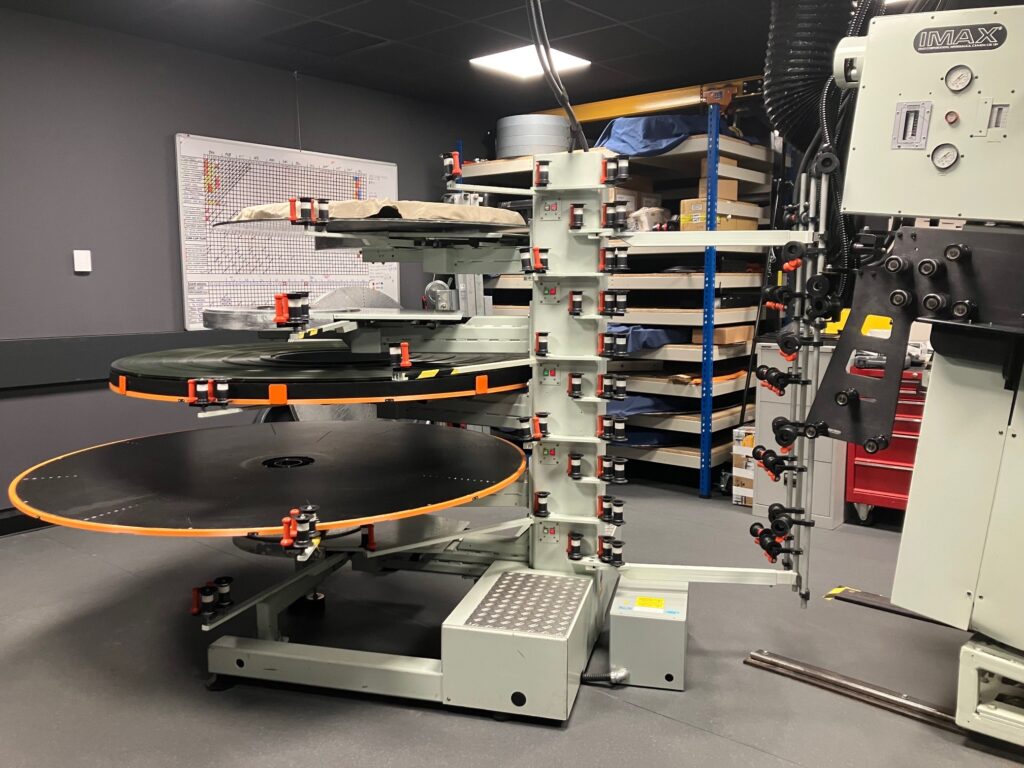Christopher Nolan’s Oppenheimer has arrived at IMAX: The Ronson Theatre! Those lucky enough to get a ticket will see the film presented on the highest quality image format ever devised namely, IMAX 15/70mm, which Nolan considers the ‘gold standard of motion picture photography’.
15/70mm refers to the physical characteristics of the film reel. The 15 indicates the number of perforations along the edge of the film and 70mm is the height. This full frame IMAX format produces images up to 18k resolution, far superior to the 4k images seen in most digital cinemas.
Weighing in at 270kg, this colossus has flown all the way from IMAX’s film labs in California and is the longest IMAX 15/70mm film print ever produced eclipsing the previous record holder, Nolan’s Interstellar, by 13mins.
Sent as 53 individual reels it took our team of highly skilled projectionists over 16 hours to splice, tape, and wind the final film print together.

Using the splicer (pictured below) all 53 reels are taped together using a strong zigzag join meaning we can safely run the film for over 500 screenings.

The sheer size of the print required IMAX engineers to retro fit bespoke platter extensions to accommodate its run time of 3 hours and 9 seconds.

At over 6ft in diameter and spinning at 1.5 revolutions per second we must clamp the print into place to negate any risk of it breaking free from the platter.
Taking up every square millimetre of our giant 24m x 17m screen (the size of four double-decker buses), the full frame IMAX sequences are immense but crystal clear, a feat unsurpassed by any other format, and can only be experienced in an IMAX theatre.

This visual experience is reinforced by our world-class sound system which has been retuned by IMAX sound engineers to fully optimise Nolan’s soundtrack.
All this work makes IMAX: the Ronson Theatre at the Science Museum one of only three venues in the UK to show Oppenheimer the way its director Christopher Nolan intended.
Set during the Second World War, Oppenheimer is an IMAX-shot epic thriller which follows the story of American J. Robert Oppenheimer and his time leading the Manhattan Project.
A pioneer of nuclear physics studies, Oppenheimer created the atomic bomb in his endless mission to save the world and establish peace even at the risk of destroying it.
Book your tickets now to see the only feature film shot with IMAX cameras to be released in 2023 at the Science Museum.
If you’d like to take a look inside of our projection room, our projectionists talked more in depth about the process of assembling Oppenheimer in this video:
IMAX: The Ronson Theatre is one of only 8 theatres in the world to have both IMAX 15/70mm and IMAX GT Laser, which allows audiences to experience movies in a truly immersive story-telling experience.
If you want to be the first one to know when our next IMAX blockbuster goes on sale, sign up to our mailing list. There are also a range of 3D IMAX documentaries screenings all-year-long: you can find out more on our website.